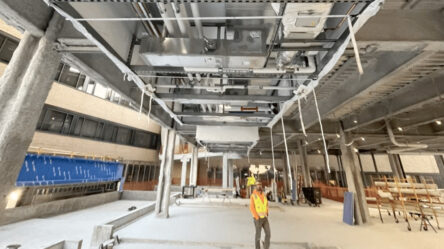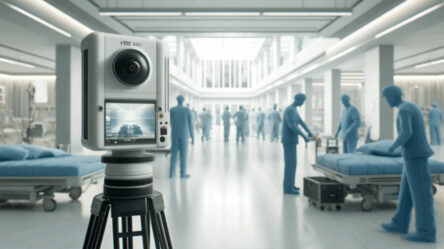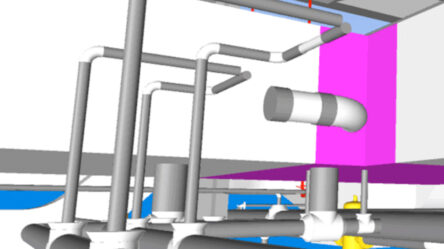Healthcare construction and renovation projects demand accuracy, efficiency, and minimal disruption to patient care. Yet, traditional surveying methods often struggle to meet these demands. Fortunately, 3D laser scanning helps contractors upgrade hospitals and healthcare facilities, ensuring uninterrupted patient care, safety, and seamless coordination.
This article explores the unique challenges of hospital upgrades, emphasizing the role of laser scanning in capturing complex building data, and the measurable benefits it brings in terms of precision, safety, efficiency, and cost savings.
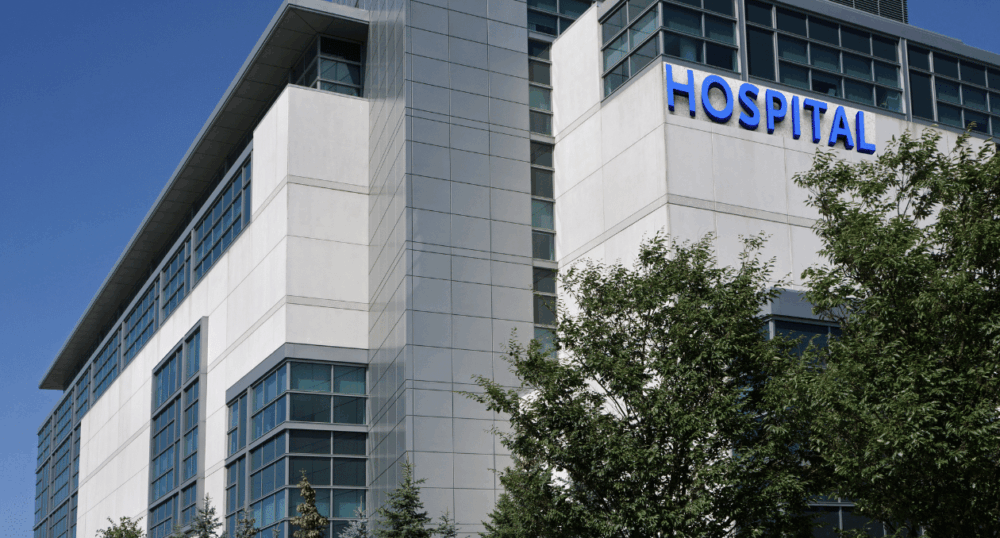
Challenges of Laser Scanning in Healthcare Renovation
Renovating hospitals is not like working in standard commercial spaces. Projects need to balance construction efficiency with continuous patient care, as they must remain operational throughout the process with strict compliance requirements. Consequently, integrating 3D laser scanning in healthcare calls for a thorough understanding of the project’s challenges
1. Managing Risky Material in Older Hospitals
Many older hospitals contain asbestos above ceilings or behind walls. Disturbing these areas without proper planning can expose staff and patients to health risks and cause costly delays.
Laser Scanning Approach: Specialized contamination carts and careful planning are required. Teams must factor in delays caused by abatement and exercise extreme caution when accessing ceiling spaces.
2. Accurately Documenting Complex MEP Systems in Healthcare Facilities
Hospitals contain extremely complex MEPFP systems (Mechanical, Electrical, Plumbing, and Fire Protection). Missing details in these systems can create clashes during renovations and lead to rework.
Laser Scanning Approach: High-precision scans capture intricate system layouts, creating a complete digital record that supports informed decision-making for designers, contractors, and facility managers.
3. Keeping Patient Care Running During Hospital Renovations
When performing a digital survey in healthcare facilities, miscommunication between scanning providers, facility managers, and medical staff may disrupt hospital operations. However, patient care must prevail during renovations.
Laser Scanning Approach: Experienced providers coordinate closely with facility managers and nursing staff. Often, scans are scheduled outside of regular business hours to minimize interference with daily operations.
4. Ensuring Patient Privacy and HIPAA Compliance in Digital Surveys
When scanning hospital facilities, contractors must ensure no patient records, screens, or sensitive information are unintentionally captured in the 3D data.
Laser Scanning Approach: Professional scanning providers follow Health Insurance Portability and Accountability Act (HIPAA) compliant protocols, such as:
- Restricting access to sensitive areas.
- Using scanning techniques that avoid recording patient-identifiable information.
- Working with hospital compliance teams to align with privacy regulations.
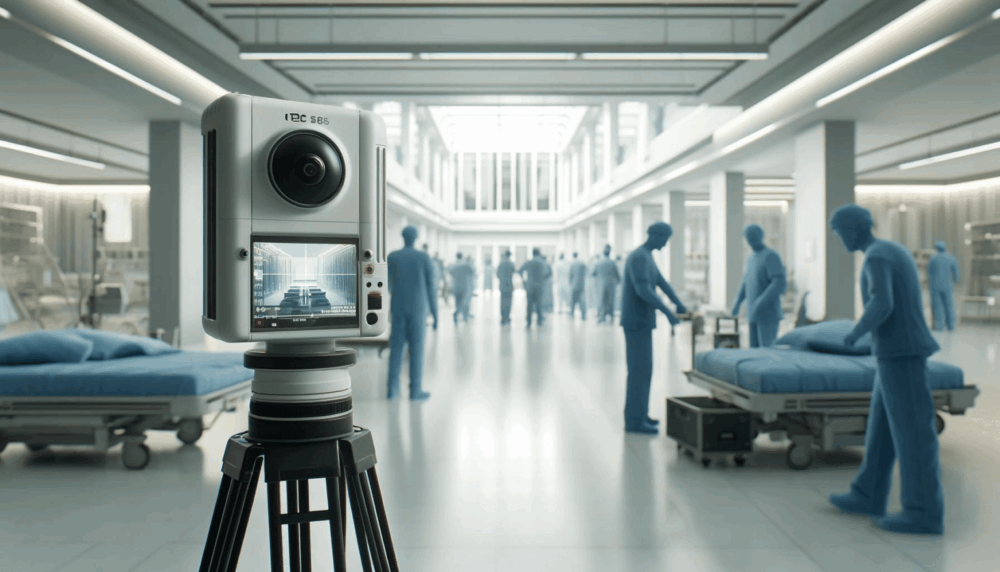
Benefits of 3D Laser Scanning in Hospital Renovations
After addressing the main challenges of healthcare renovation, the next step is to look at the solutions. 3D laser scanning stands out as the technology that delivers lasting benefits in precision, safety, efficiency, and long-term value.
1. Precision That Reduces Errors
In hospital upgrades, even small mistakes in measurements can delay construction and affect patient care.
How scanning helps:
- Creates highly accurate as-built documentation.
- Captures every detail of floors, ceilings, and MEP systems.
- Ensures renovations move forward with confidence and fewer surprises.
2. Faster Workflows with Digital Construction
Traditional surveying and documentation methods are time-consuming and labor-intensive, and time is key in hospital renovations. Any delay can disrupt daily operations and directly impact patient care.
How scanning helps:
- Collects millions of data points in minutes.
- Speeds up surveys and documentation.
- Detects clashes early when design models are compared with scan data.
- Keeps renovations on schedule and within budget.
3. Stronger Collaboration Across Stakeholders
A unified digital model provides contractors, facility managers, and design teams with a single source of truth. This clarity strengthens communication, minimizes misunderstandings, and supports well-informed decision-making.
4. Cost Savings and Future-Proof Value
The advantages extend well beyond a single project. When reducing rework, shortening timelines, and creating a permanent digital record of hospital systems, laser scanning delivers cost savings today while laying the groundwork for future renovations and expansions.
Conclusion
3D laser scanning sets a higher standard for hospital renovations, bringing precision, compliance, and streamlined efficiency without disrupting patient care. It’s a reliable tool for contractors to overcome today’s demands and build a confident plan for future upgrades. Contact ENG to learn more.



